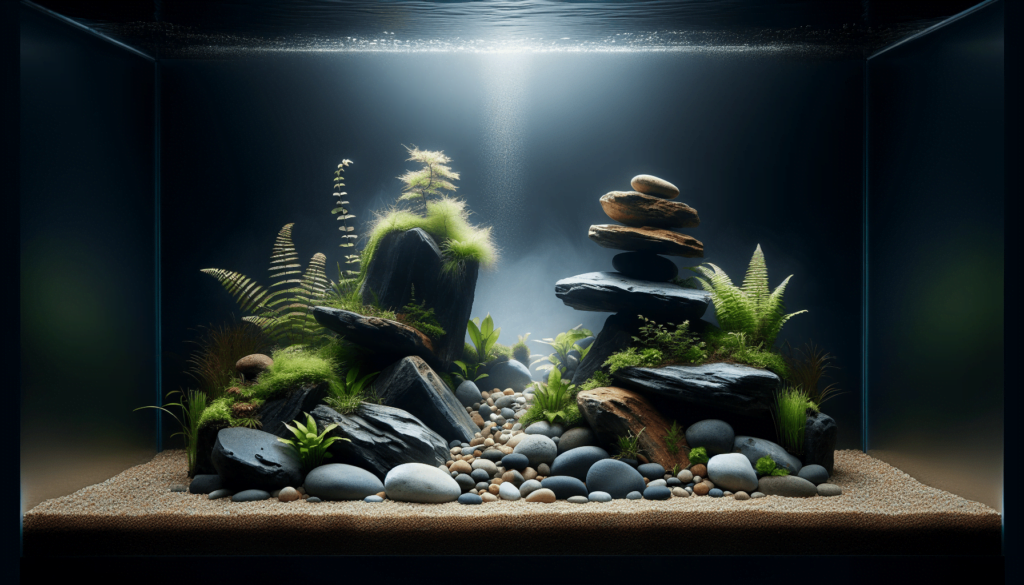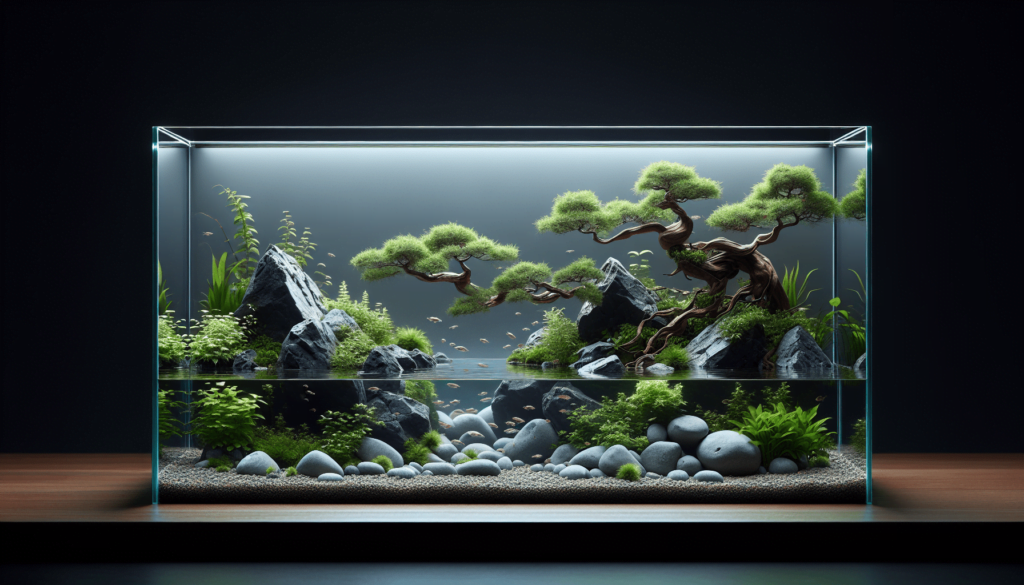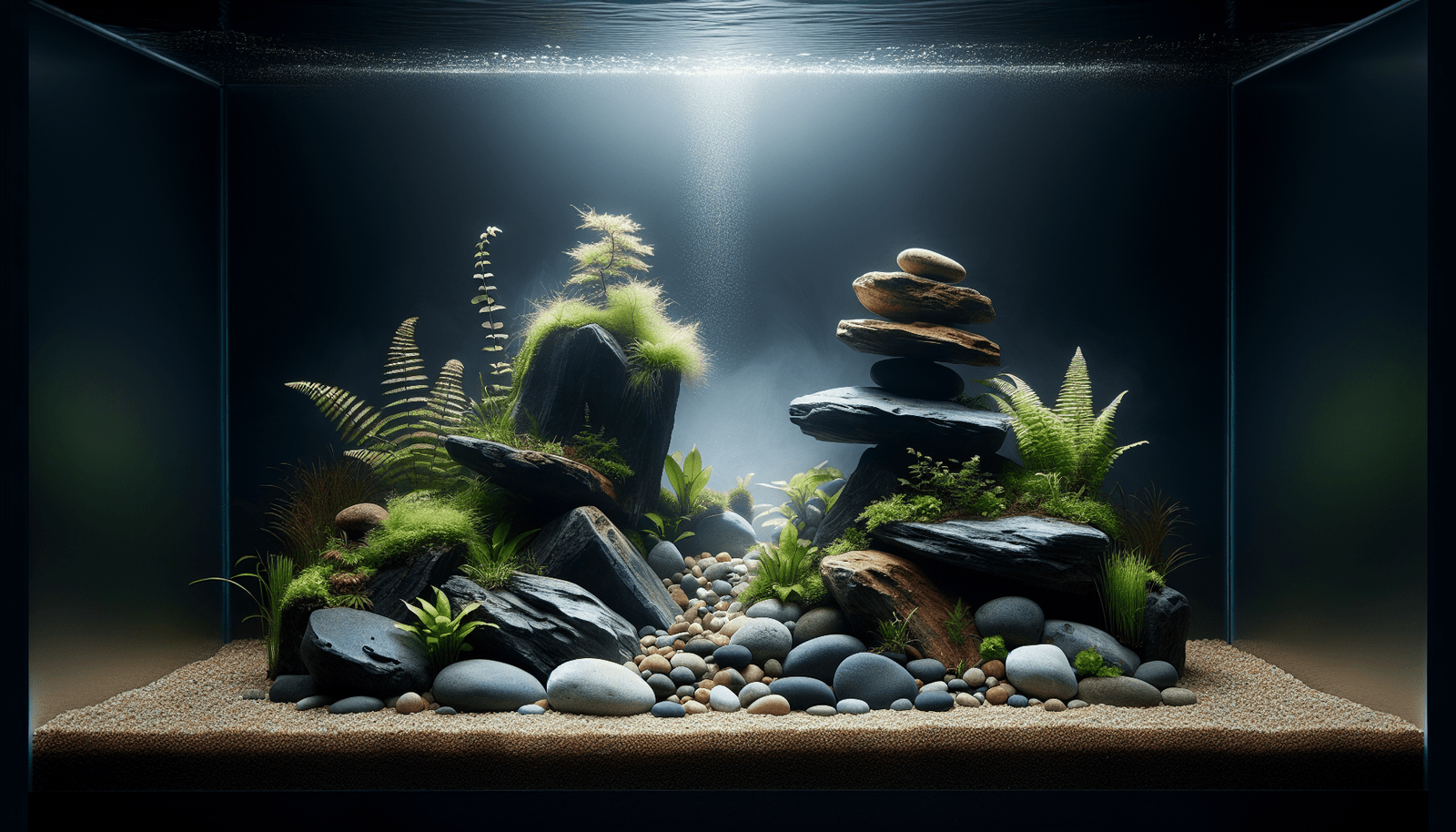Imagine turning your fish tank into a beautiful underwater garden, where every rock and plant has its special place. That’s what “Mastering Iwagumi Aquascaping: An Artistic Guide” is all about. It’s like a treasure map that shows you how to create a magical underwater world. A long time ago, people in Japan started arranging rocks and plants in water to make stunning nature scenes. Today, many people around the world enjoy doing this too. This article will take you on a fun journey through the art of Iwagumi aquascaping. You’ll learn all about the different rocks, plants, and how to place them just right. Plus, you’ll get to see some cool examples of how other people have made their fish tanks look amazing. By the end, you might be excited to try creating your own underwater garden!
Mastering Iwagumi Aquascaping: An Artistic Guide
Have you ever thought about creating a peaceful, natural landscape inside your home? Iwagumi aquascaping is like painting, but with rocks, plants, and water. It’s a special way to make a tiny, underwater world that looks like a beautiful garden.

Understanding Iwagumi Aquascaping
Defining Iwagumi Aquascaping
Iwagumi aquascaping is a unique style of setting up aquariums that highlights simplicity and harmony. The word “Iwagumi” actually comes from Japan and means “rock formation.” In this style, rocks are the stars of the show, and they are placed in a way that looks natural and calming.
Distinguishing Characteristics of Iwagumi Aquascapes
What makes Iwagumi aquascapes special is how they use rocks and plants. There are usually not many different kinds of plants or colors. Instead, the focus is on the shape and placement of rocks and a few types of plants that cover the ground like a soft, green carpet.
Origins and Inspiration for Iwagumi Aquascaping
The Iwagumi style was inspired by Japanese gardens, which are known for their simplicity and beauty. These gardens often use rocks, sand, and plants to create scenes that remind people of nature. The Iwagumi style brings these peaceful scenes into your home with an aquarium.
Fundamentals of Iwagumi Aquascaping
Components of an Iwagumi Aquascape
In an Iwagumi aquascape, there are a few important pieces: the rocks, the plants, and the fish. The rocks are the most important, and there are special names for them based on their size and position.
Understanding the Concept of ‘Suhama’
‘Suhama’ is a part of Iwagumi aquascaping that includes gently sloping areas, often made of sand, that represent beaches or riverbanks. It adds to the natural look of the scene.
Recognizing the ‘Oyaishi’, ‘Fukuishi’ and ‘Soeishi’ Stones
‘Rocks’ are not just ‘rocks’ in Iwagumi. The largest and most important rock is called ‘Oyaishi.’ It’s like the big boss of the aquascape. Then there are ‘Fukuishi’ and ‘Soeishi’ stones, which are smaller but help make the whole scene look together and balanced.
Starting Your Iwagumi Aquascape: Initial Planning
Selecting the Right Aquarium Size and Shape
Choosing the right tank is like picking the perfect canvas for a painting. You need enough space to create your scene, but not so much that it becomes too hard to manage.
Choosing Substrate and Stone Materials
The ground of your aquascape, or the substrate, can be special soil that’s good for plants. The stones should be strong in character but look like they belong together.
Incorporating Principles of Scale and Proportion
Just like in art, your aquascape needs balance. Bigger rocks should look like they fit with smaller ones, and the plants shouldn’t hide the beauty of your stones.
Setting up an Iwagumi Aquascape
Placement of the Oyaishi Stone
Your biggest rock, the Oyaishi, goes in first. It’s like the main character in a story. You want it to stand out but also look like it’s part of the scene.
Arranging the Fukuishi and Soeishi Stones
Next, add your supporting rocks, the Fukuishi and Soeishi. They help tell your story by making the scene fuller and more interesting but without taking all the attention away from the Oyaishi.
Adding Substrate and Planting Carpet Plants
After your rocks are in place, it’s time to add the soil and plant your carpet plants. These are short plants that spread out and cover the ground, making everything look lush and green.

Maintaining an Iwagumi Aquascape
Routine Care and Maintenance Tips
Taking care of your aquascape is like taking care of a mini garden. You’ll need to trim the plants, clean the glass, and change some of the water now and then to keep everything healthy and pretty.
Understanding the Importance of Lighting and Filtration
Good light makes your plants grow and shows off their colors. Clean water is a must, too, so your fish are happy, and your rocks and plants look their best.
Dealing with Possible Algal Blooms
Sometimes, unwanted green algae can start to grow. This usually means you need to check your light and water to make sure they’re just right—not too much or too little.
Specific Challenges in Iwagumi Aquascaping
Difficulty of Achieving Visual Balance
Making everything in your aquascape look ‘just right’ is a fun challenge. It might take a few tries to get your rocks and plants to look like a natural, peaceful scene.
The Challenge of Algae Control
Keeping algae away is a common challenge. Finding the perfect balance of light, water, and nutrients, so your plants can outcompete the algae, is the key.
Managing Growth of Carpet Plants
Carpet plants need to be trimmed so they stay short and neat, covering the ground like a lush, green carpet without hiding your beautiful rocks.
Inspiring Iwagumi Aquascape Examples
Exploring Noteworthy Iwagumi Aquascapes
There are many beautiful Iwagumi aquascapes out there to get inspiration from. Some use big, dramatic rocks, while others are peaceful and minimalistic.
Learning from the Masters: Notable Aquascapers
Famous aquascapers like Takashi Amano have created stunning Iwagumi aquascapes. They have books and pictures of their work that can teach you lots and give you ideas.
Incorporating Unique Elements in Iwagumi Aquascapes
Even though Iwagumi aquascapes have rules, there’s always room for your own creativity. Maybe you find a special rock or plant that inspires your unique aquascape.
Common Mistakes to Avoid in Iwagumi Aquascaping
Avoiding Overpopulation of Fish
Too many fish can make your aquascape look crowded and can harm the water quality. Just a few small, peaceful fish add life without taking away from the beauty of your rocks and plants.
Preventing Overgrowth of Plants
Letting your carpet plants grow too high can hide your beautiful rocks. Regular trimming is the secret to keeping everything looking neat and tidy.
Ensuring Proper Lighting and Filtration
Too much light can lead to algae, and not enough filtration can make the water dirty. Getting both of these just right is important for a healthy, beautiful aquascape.
Advancing Your Skills in Iwagumi Aquascaping
Exploring Advanced Techniques in Iwagumi Aquascaping
Once you’re comfortable with the basics, you can try new ideas, like using different kinds of plants or creating more complex rock formations.
Incorporating Other Aquascaping Styles
Mixing Iwagumi with other aquascaping styles can lead to unique and creative aquariums. Maybe you blend Iwagumi’s rocks with a dense forest of plants from another style.
Joining Aquascaping Groups and Societies
Meeting other people who love aquascaping can be really fun. They can give you advice, inspire you with their aquariums, and share all the best tips and tricks.
Future Trends in Iwagumi Aquascaping
Possible Innovations in Iwagumi Aquascaping
Who knows what new ideas and techniques will come next? Maybe there will be new kinds of plants or new ways to light and filter water that make aquascaping even more amazing.
The Role of Technology in Future Iwagumi Aquascapes
Technology might give us new ways to take care of our aquascapes, like smart lights that change with the time of day or filters that tell us when the water needs changing.
Increasing Global Interest in Aquascaping
More and more people all over the world are discovering how fun and beautiful aquascaping can be. This means more friends to share your hobby with and more amazing aquascapes to inspire you.
Creating your own Iwagumi aquascape is a wonderful way to bring a piece of nature’s serenity into your home. By understanding the principles, planning carefully, and maintaining your creation lovingly, you can enjoy a living work of art that brings peace and beauty to your space. Remember, every aquascaper starts somewhere, and with patience and practice, you’ll be able to create an underwater landscape that’s uniquely yours.



